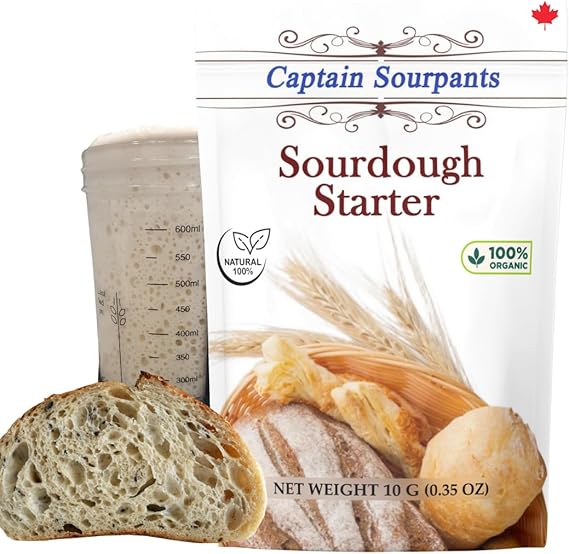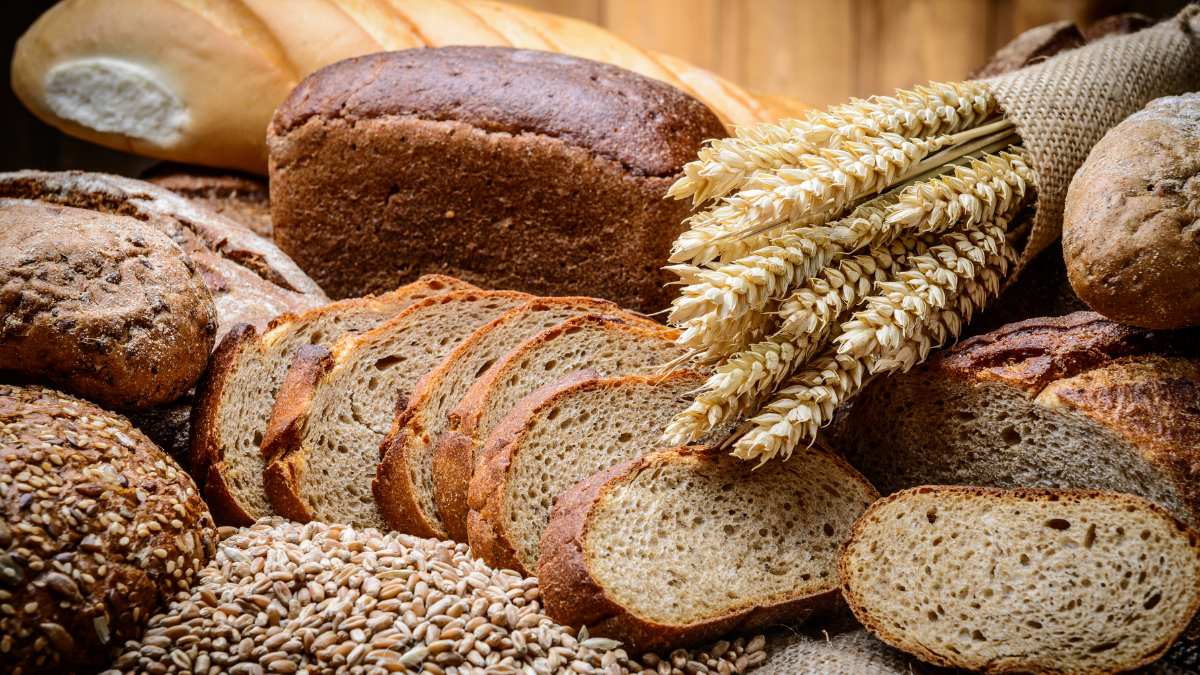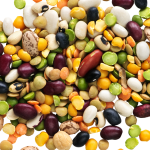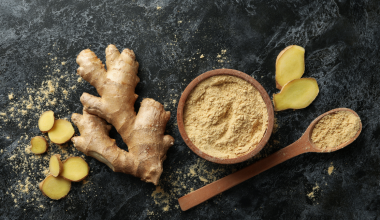Summary
Whole wheat offers fiber for digestion, regularity, and heart health, while sourdough’s fermentation improves nutrient absorption, eases digestion, and may stabilize blood sugar. The best choice depends on your goals—fiber or gentler digestion. Including both in a minimally processed diet can maximize gut and overall health benefits.
When you buy through our links, we may earn a commission. Learn More.
Remember the great sourdough craze of 2020? As Canada locked down and sourdough starters bubbled on kitchen counters from Vancouver to Halifax, we collectively rediscovered something ancient: fermentation. For many of us (me included), baking sourdough bread became a small act of comfort, connectivity and control in a uncertain times to create something alive, nourishing, and beautifully simple.
But sourdough wasn’t the only loaf on the rise.
At the same time, Canadians were scooping up whole wheat flour and baking hearty loaves at home—often for the very first time. Flour mills reported shortages of not just white flour, but whole grain varieties, too. Whether motivated by nostalgia, health goals, or just the simple pleasure of feeding our families, baking became both a coping strategy and a cultural moment.
Now that the yeast has settled, it’s worth asking: what did we actually gain from all that home baking—besides some new kitchen skills? The answer might be a focus on better digestion, improved blood sugar balance, and more efficient nutrient absorption… depending on the bread you choose.
So, which one deserves a place on your plate today—fibre-rich whole wheat or fermented, gut-friendly sourdough? Let’s break it down.
The Basics: What’s the Difference?
Whole wheat bread is made from flour that contains all parts of the wheat kernel—bran, germ, and endosperm—making it rich in fibre, B vitamins, and minerals.
Sourdough, on the other hand, isn’t defined by the type of flour, but by the method of fermentation. Traditionally made using a wild yeast starter, sourdough undergoes a long fermentation process that breaks down gluten and phytic acid, which may affect how your body digests and absorbs nutrients.
Health Benefits of Whole Wheat Bread
Whole wheat bread has long been a staple for health-conscious Canadians—and for good reason. When made from 100% whole grain flour, it delivers a powerful nutritional punch that supports heart health, digestion, and blood sugar stability.
But not all whole wheat bread is created equal, and there are growing concerns about how wheat is grown in North America that could impact how our bodies respond to it.
1. High in Fibre, Vitamins, and Minerals – Especially if Whole Grain
Whole wheat bread is often thought to be made from whole grains—but that’s not always the case. In Canada, “whole wheat” flour typically includes only part of the grain: some of the bran (which provides fibre), some of the germ (which contains nutrients), and most of the endosperm (mainly starch).
Unless the label specifically says “100% whole grain” or “whole grain whole wheat,” the loaf may be missing key components of the wheat kernel. Additionally, many “whole wheat” breads contain only a small percentage of whole grain flour. Look for “100% whole wheat” on the label.
Still, whole wheat bread offers more than just carbohydrates—it can provide B vitamins, iron, magnesium, zinc, and antioxidants, depending on how it’s made. The added fibre helps regulate digestion, support healthy blood sugar, and lower LDL (“bad”) cholesterol, all while promoting a longer-lasting feeling of fullness.
2. Not All Wheat Is Equal: The Glyphosate Controversy
You may have had friends and family report that they can eat bread while traveling in Europe with no digestive issues—but experience bloating, discomfort, or intolerance when consuming wheat products back home. While part of this may be due to the higher gluten content in North American wheat, some scientists are also studying the chemical herbicide glyphosate as a potential gut irritant.
Glyphosate has been classified as a “probable human carcinogen” by the World Health Organization’s International Agency for Research on Cancer (IARC). It is still in use as an agricultural herbicide in Canada, while its use is severely restricted in some European countries.
Health Benefits of Sourdough Bread
Sourdough isn’t just rustic and trendy—it’s also one of the most digestible and nutrient-accessible types of bread you can eat, thanks to its natural fermentation process.
What sets sourdough apart is not the type of flour used (you can make sourdough from white, whole wheat, rye, or even spelt), but how it’s made: slowly, using wild yeasts and beneficial bacteria that work together to break down the dough over time.
Here’s why that matters for your health:
1. Easier to Digest
One of the most common reasons people gravitate toward sourdough is that it tends to be gentler on the digestive system—even for some with mild gluten or wheat sensitivities. That’s because the fermentation process partially breaks down gluten proteins and reduces FODMAPs, which are known to cause bloating and discomfort in sensitive individuals.
2. Supports Gut Health and Nutrient Absorption
Sourdough’s fermentation process also reduces phytic acid, an anti-nutrient that binds to minerals like zinc, magnesium, and iron and prevents absorption. By lowering phytic acid levels, sourdough can make these important nutrients more bioavailable, something especially beneficial if you’re eating whole grain sourdough.
3. May Improve Blood Sugar Response
Unlike many refined breads that cause rapid blood sugar spikes, sourdough has a lower glycemic response, meaning it leads to a slower rise in blood sugar. That’s partly due to the organic acids created during fermentation, which can slow starch digestion.
4. May Be Better Tolerated—But Not Always
Many Canadians report that they can eat bread—especially sourdough—in Europe without experiencing the same bloating or discomfort they do at home. Part of this may relate to how sourdough is fermented longer and more traditionally in European countries, but it also highlights a bigger issue: what kind of wheat is being used.
While sourdough is easier to digest and more nutrient-friendly, it’s important to know that sourdough made with conventionally grown wheat can still contain glyphosate residue—just like conventional whole wheat bread. Additionally, commercial sourdough may use yeast and skip natural fermentation—losing many of the benefits.
Because of this, the quality of the wheat matters just as much as the fermentation. If you’re sensitive to glyphosate, choosing organic sourdough—or sourdough made with heirloom, stone-ground, or European-style flours—may help reduce symptoms.
Making Sourdough At Home
If you missed the sourdough craze or want to try again, getting started is easier than you think. The most important part of getting started is to create your starter.
Ask friends or family if they have a mature starter that they can share. Some starters have been passed down through generations, connecting you to a living culinary lineage—a form of fermentation folklore that lives on in every loaf, and also provides distinct health benefits.
If this option isn’t available, you can make your own starter with flour and water. With a little time and patience, these turn into a living culture of wild yeast and gut-friendly bacteria—your sourdough starter. Once your starter is bubbling and active, you can use it to make naturally leavened bread that’s rich in flavour and easier to digest.
If you’d rather skip the waiting and uncertainty, you can also buy a live, dehydrated sourdough starter—just add water and flour, and you’re good to go. Here’s our choice:

Organic, mature sourdough starter. Also includes gluten free option. Non-GMO, Organic and 100% Natural ingredients. – No preservatives, chemicals, or artificial additives. Just pure, high-quality sourdough starter culture for authentic and delicious homemade sourdough bread.
Baking sourdough at home isn’t just rewarding—it’s also a great way to take control of your ingredients, support your gut health, and enjoy the deep, tangy flavour that only fermentation can deliver.
So Which Is Better?
🧠 Choose Whole Wheat If:
- You’re looking to increase fibre intake
- You need to lower cholesterol or manage weight
- You don’t have gluten sensitivity
💪 Choose Sourdough If:
- You have mild gluten or FODMAP intolerance
- You want better nutrient absorption
- You’re watching your blood sugar
🌾 Best of Both Worlds:
- Choose organic whole wheat sourdough
- Get high fibre and natural fermentation benefits
- Lower glyphosate exposure and support your gut
Canadians Are Thinking Differently About Bread
The pandemic didn’t just kick off a home-baking trend—it sparked a deeper interest in what goes into our food and how it makes us feel. In recent years, more Canadians have been seeking simpler, gut-friendly bread options that move beyond basic white loaves.
If you’re looking for fibre and heart-health benefits, 100% whole wheat (whole grain, preferably) is a great choice. If you want bread that’s gentler on digestion, offers better nutrient absorption, and may help with blood sugar regulation, sourdough could be your go-to.
But for the best of both worlds? Look for a naturally fermented, organic whole wheat sourdough—it checks all the boxes for fibre, gut health, and clean ingredients.
~ Read more from The Health Insider ~
- The Affordable Superfood Canadians OverlookPacked with protein, fibre and key nutrients, beans are a budget-friendly way to boost health and support local farmers.
- Ozempic, Wegovy and Mounjaro Are Changing Our Food ChoicesAppetite-suppressing GLP-1 medications may be changing the way Canadians eat – Smaller appetites and healthier choices are impacting restaurants and the food supply sector in significant ways.
- Eat Your Way to a Healthier Heart with a Metabolic CoachFrom balancing blood sugar to reducing inflammation, Certified Metabolic Coaches help you use food as medicine for your heart and overall wellbeing.
- Fuel Your Mind: Low-Effort Healthy Eating for StudentsNo time to cook? Here’s how students can fuel focus and energy with quick, budget-friendly, no-cook meals.
- Unlock Garlic’s Superpowers With One Simple TrickGarlic is more than flavour—it’s medicine. Learn the simple prep trick that unlocks its full health benefits, from heart to brain to immune support.
- Do This Simple At-Home Mushroom Trick To Boost Your Vitamin DTanning your mushrooms can add over 1,000 IU of vitamin D in just 30 minutes. That’s the same as most supplements deliver in one pill.
The information provided on TheHealthInsider.ca is for educational purposes only and does not substitute for professional medical advice. TheHealthInsider.ca advises consulting a medical professional or healthcare provider when seeking medical advice, diagnoses, or treatment. To read about our editorial review process click here.
















